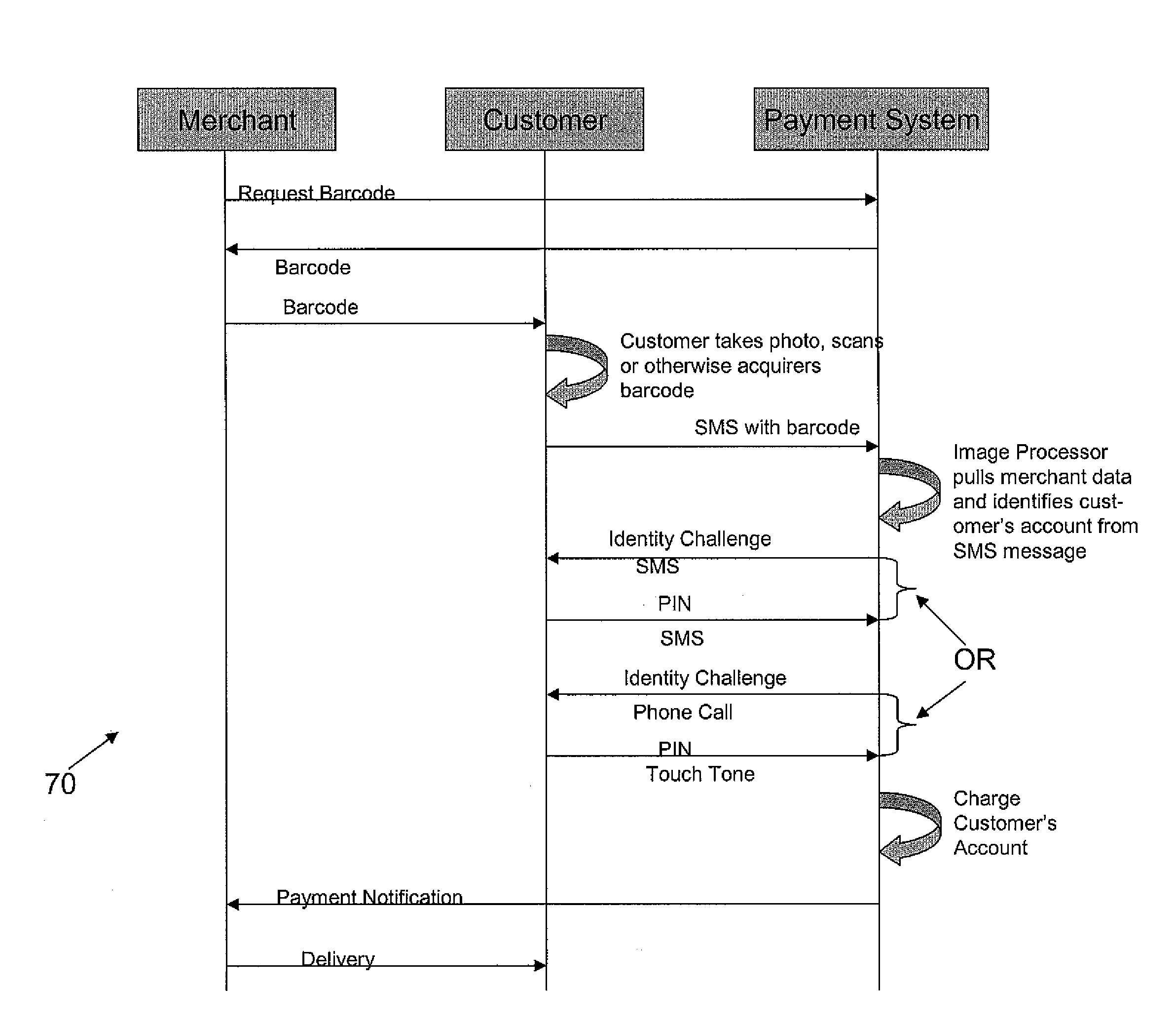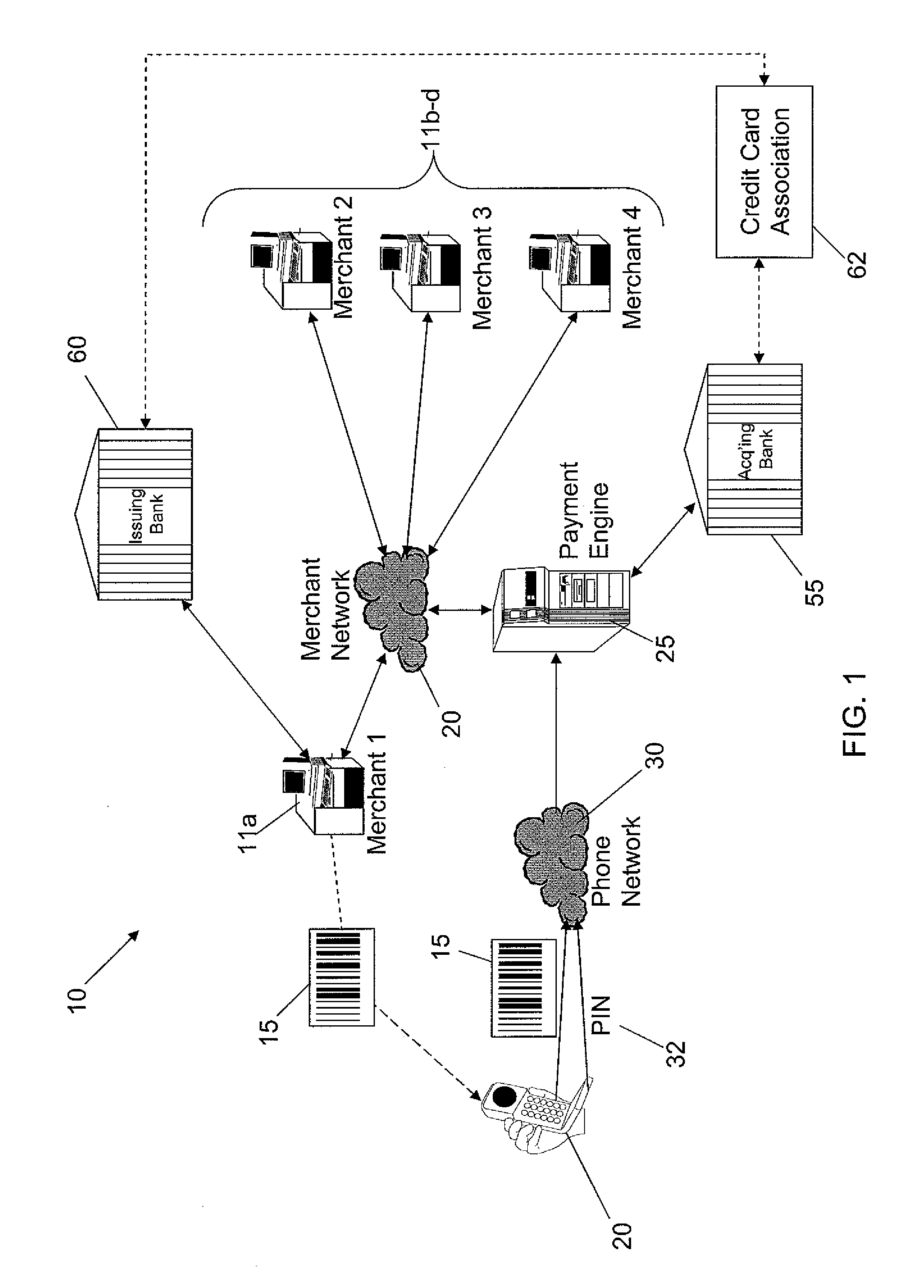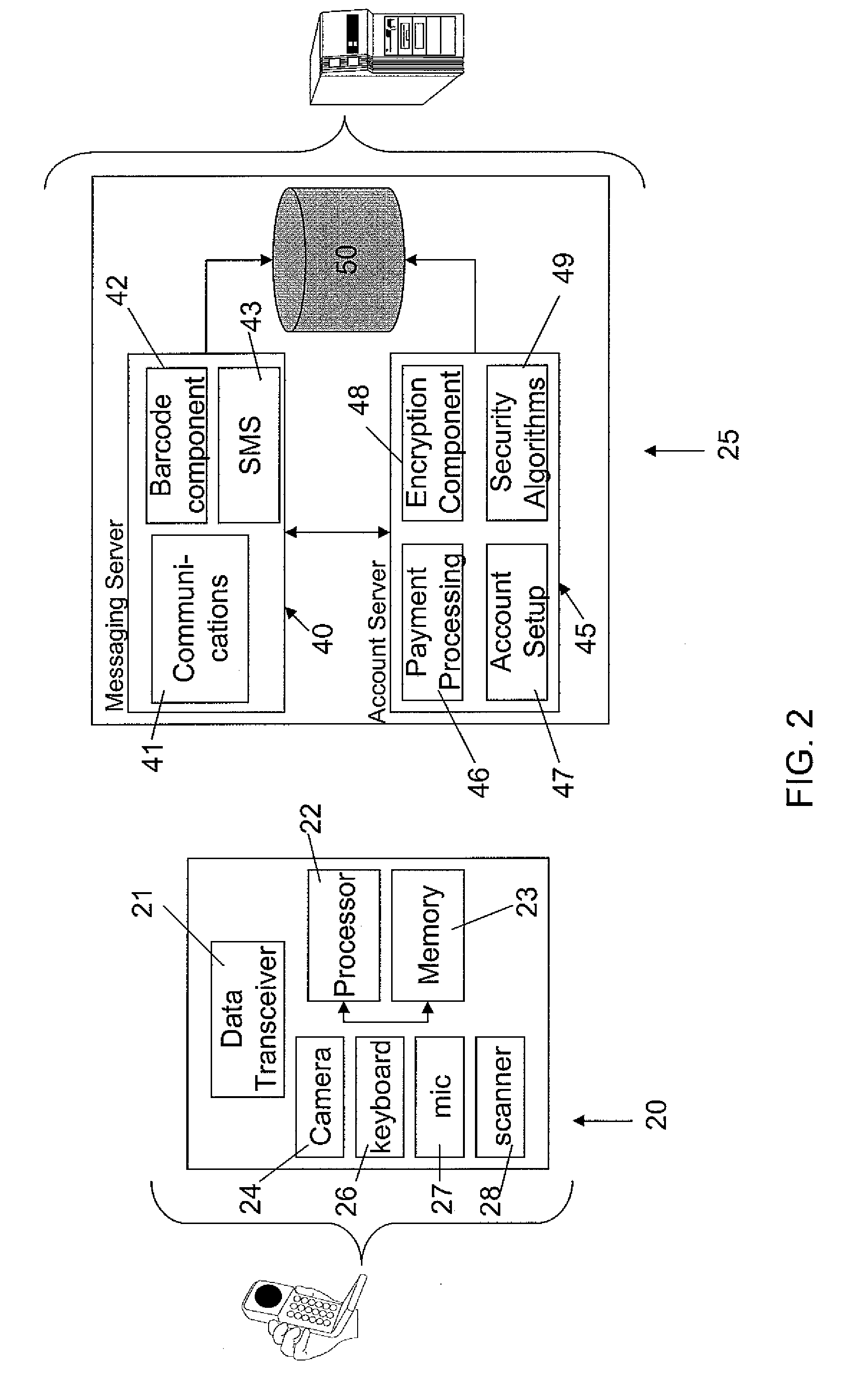Distributed Payment System and Method
a payment system and distribution system technology, applied in the field of distribution systems and methods for handling payments, can solve the problems of inaccessible or difficult for most users, system is not real-time or completely automated, and requires additional hardware and/or software for the consumer's mobile phone and/or the merchant's point of sale (pos) technology, etc., to achieve the effect of convenient use of the interfa
- Summary
- Abstract
- Description
- Claims
- Application Information
AI Technical Summary
Benefits of technology
Problems solved by technology
Method used
Image
Examples
Embodiment Construction
[0018]As shown in FIG. 1, the present invention provides a payment system 10 that allows a mobile communication device (MCD) 20 to interact with a merchant processing device (MPD) 11a and a payment engine 25. In one embodiment of the present invention, the MCD is an off-the-shelf device with no additional software installed. The merchant device 11a communicates with the payment engine 25 through merchant network 20, which can optionally be a secure network accessible over the Internet. It will be appreciated that other merchants 11b-d can also access payment engine 25 through the merchant network 20.
[0019]As shown in FIG. 2, the payment engine 25 employs a messaging server 40 and an account server 45 to accommodate merchant payment and account configurations, merchant commercial offerings, customer payment and account configurations, and customer orders in accordance with the present invention. The payment engine messaging server 40 includes a communications component 41, a barcode ...
PUM
 Login to View More
Login to View More Abstract
Description
Claims
Application Information
 Login to View More
Login to View More - R&D
- Intellectual Property
- Life Sciences
- Materials
- Tech Scout
- Unparalleled Data Quality
- Higher Quality Content
- 60% Fewer Hallucinations
Browse by: Latest US Patents, China's latest patents, Technical Efficacy Thesaurus, Application Domain, Technology Topic, Popular Technical Reports.
© 2025 PatSnap. All rights reserved.Legal|Privacy policy|Modern Slavery Act Transparency Statement|Sitemap|About US| Contact US: help@patsnap.com



